Over the last ten days or so Police Armoured Land Rovers have again been out on the streets of Northern Ireland in high numbers, writes Bob Morrison.
~
Periodically documenting on camera the various types of armoured Land Rovers used in the Province, first by the Royal Ulster Constabulary or RUC and then by its 2001 successor the Police Service of Northern Ireland or PSNI, has been one of my major projects since 1988. Note that none of the accompanying photos are of the recent disturbances.
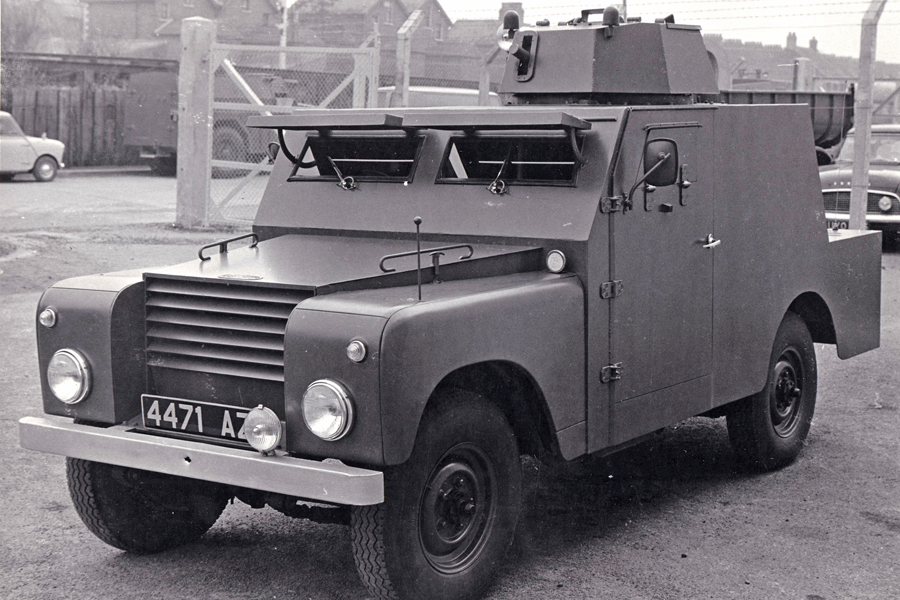
First conceived close on sixty years ago, at an initial Home Office meeting held in November 1961, the first fully armoured Land Rover was designed by an in-house RUC team in 1962 and a prototype with a mild steel plate body was completed by January 1963. An armoured body prototype, configured for three men and with a machine gun turret, was completed in 1964 and after acceptance the type was then put into production, built by Belfast-based Short Brothers, as the Shorland Armoured Car. To cut a long story short, the first Shorland Armoured Cars were used by the RUC from 1966 for border patrols along the interface with the Irish Republic and in the summer of 1969 they appeared on the streets of Belfast when the three decade long period of civil strife known as ‘The Troubles’ erupted.
The Armoured Land Rover story in Northern Ireland now gets a bit more complicated, as in 1970 the British Army (deployed to Ulster on Operation BANNER) developed an improvised lightweight appliqué armour kit (the VPK) for their vehicles which the RUC also then used, and slightly after this Short Brothers set about developing a private venture Armoured Personnel Vehicle version with room for up to six officers in the rear. In 1976 the RUC bought three of these commercial APV variants, designated SB301 by the manufacturer, but slightly before this they also designed a conversion package consisting of an armoured steel kit (produced in Wales) which could be added to a commercial Series III Land Rover chassis by their in-house workshops. This type of vehicle was called the Hotspur, after the type of armoured plate used, and it was produced in bulk in the late 1970s.
In 1985 the RUC snapped up five Stage One V8-powered Shorts SB401 vehicles from a cancelled export order, while developing new designs based on the new coil-sprung One-Ten chassis, and shortly before this a small number of experimental models (Shenzi and Simba) were also developed and put in service. These vehicles had more angular rear bodies making them easy to differentiate from the Tangi – see the middle vehicle in the trio below, which is a Simba.
Two more RUC Tangis with a sloping-sided Simba in between, Belfast 12 July 1995 [©Bob Morrison]
Meanwhile a batch of Hotspur armoured body kits from clapped-out Series III chassis was transplanted onto around one hundred of the new Land Rover One-Ten chassis model and the Tangi was born. Roll on a few more years and many of the early Tangi Land Rovers were refurbished and upgraded, including with additional protection for the upper bodies.
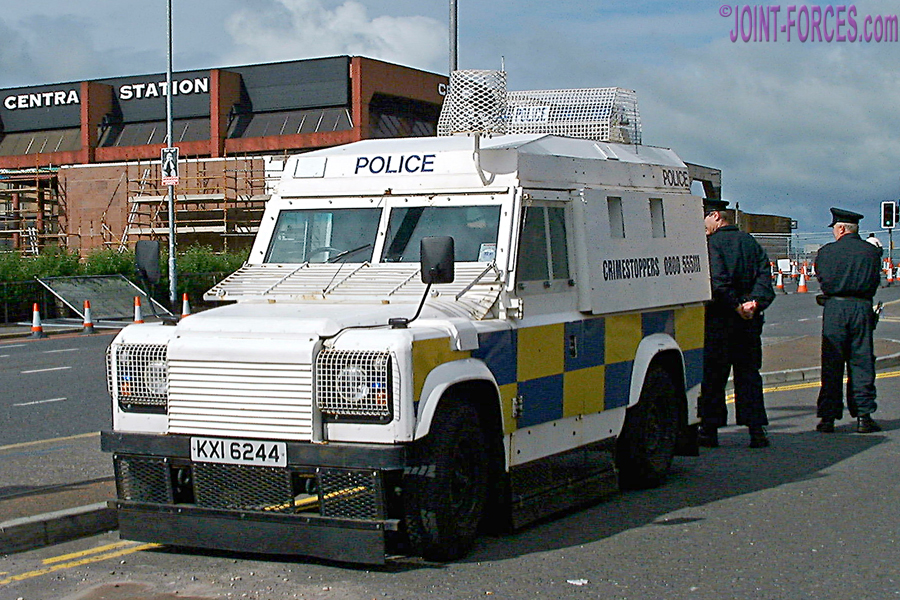
This Tangi model, with various modifications to suit increasing threat levels, became the fleet standard and several hundred more Tangi Land Rovers were produced and subsequently modified and/or upgraded throughout the 1990s and into the very early years of the new millennium until the oldest eventually had to be replaced between mid-2011 and around 2014.
These latest Land Rovers were mostly produced by OVIK Solutions of England, in two slightly different 2011 and 2012 batches, and known as the PANGOLIN. However, following a legal dispute between vehicle suppliers the production of the second batch was shared with Penman Engineering, whose vehicle had a different rear body shape; these were designated Penman ALR by the PSNI. Having established a good working relationship with the RUC / PSNI over 20+ years I was fortunate to be allowed exclusive access to photograph PANGOLIN, PANGOLIN B2 and Penman ALR models inside police facilities before they were operationally deployed for the ‘Marching Season’ for the first time.
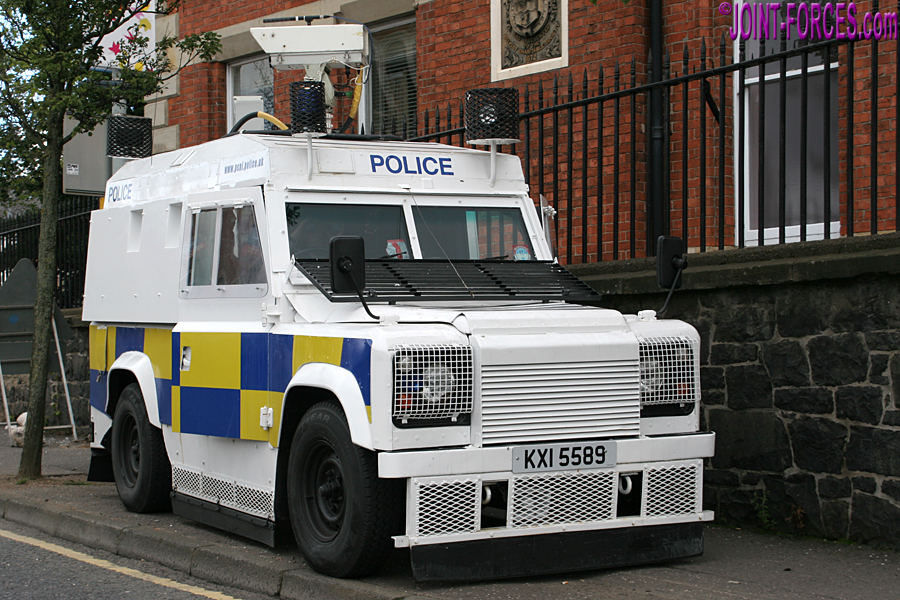
This brief article is just a potted history of the ‘Ulster Rovers’ and, hopefully before the 60th anniversary of the first Shorland prototype, I intend to delve deeper into my archives to tell more of the story. Also, before I am pulled up about this on social media, I am well aware that Police Land Rovers are not Military Land Rovers, but rather than creating a whole new section of the website for them I have decided this section is the best place to put such articles.
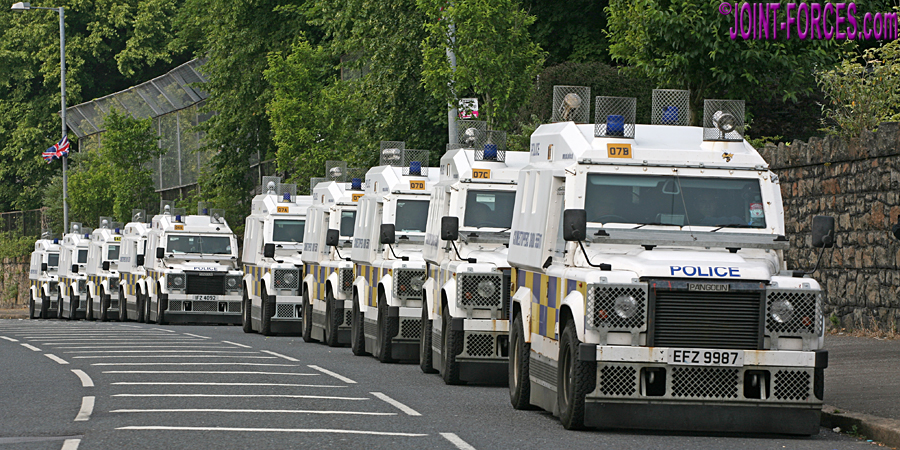
- For more on the Shorts APV see:- MLR26 ~ Short Brothers APV and Otokar ZPT
[all images ©Bob Morrison 1988, 1995, 2001, 2002, 2011, 2012 & 2013 unless noted]



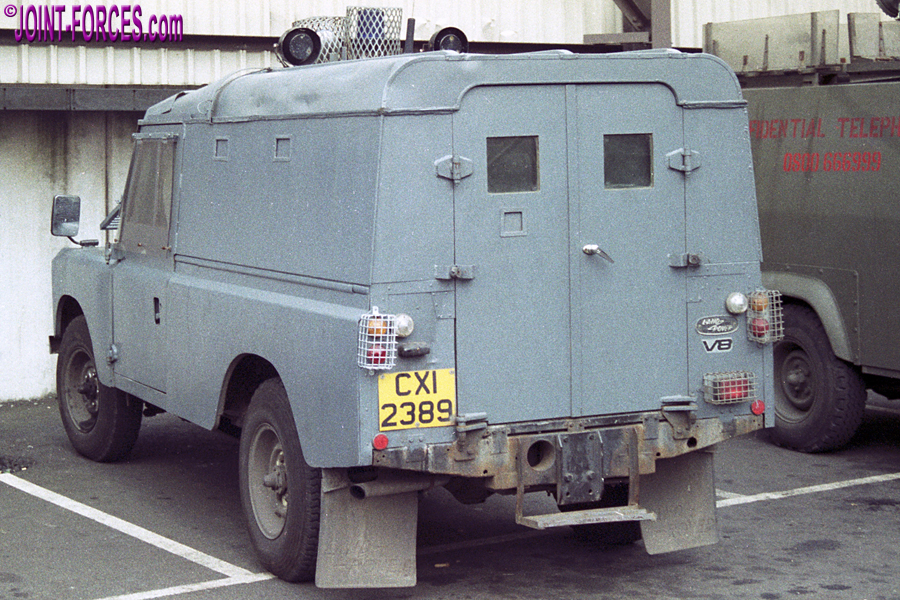
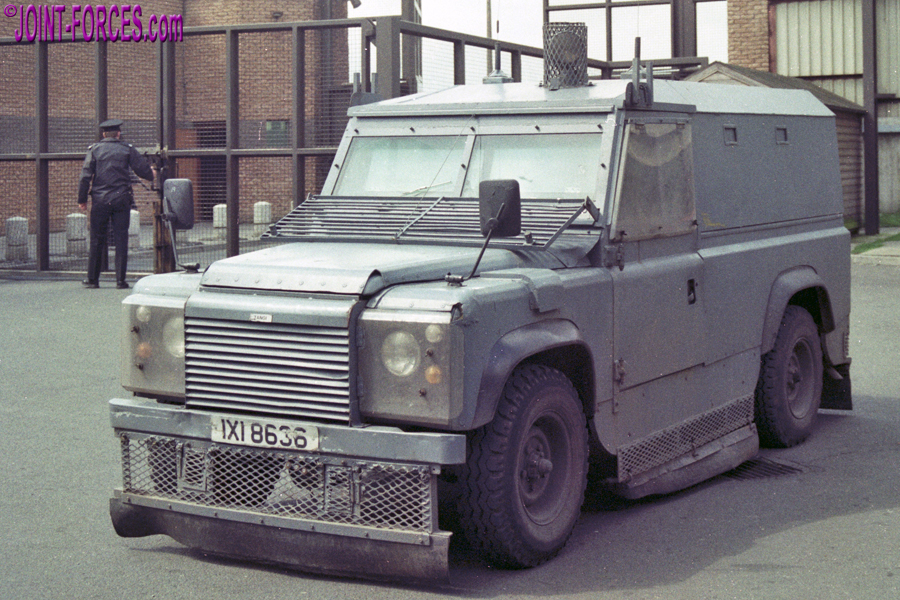

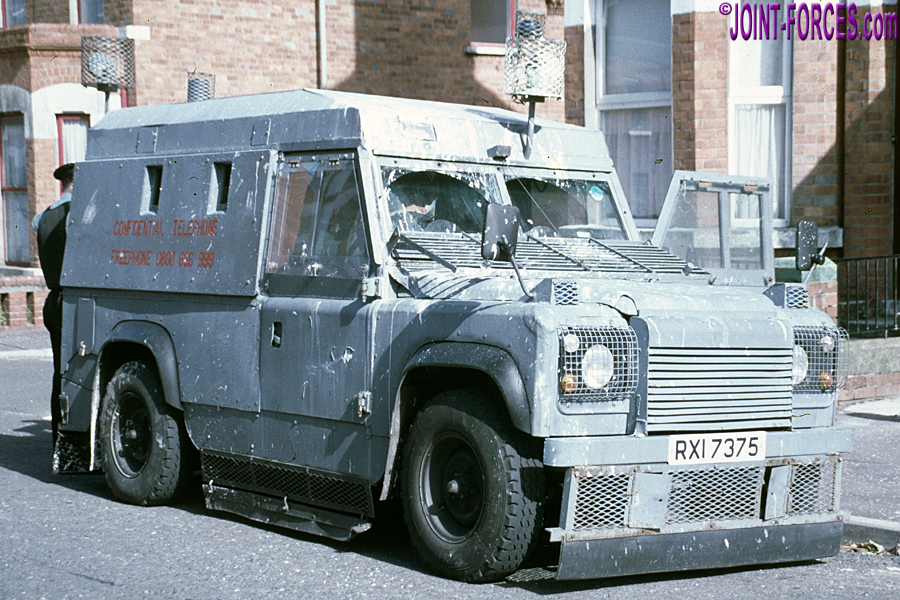
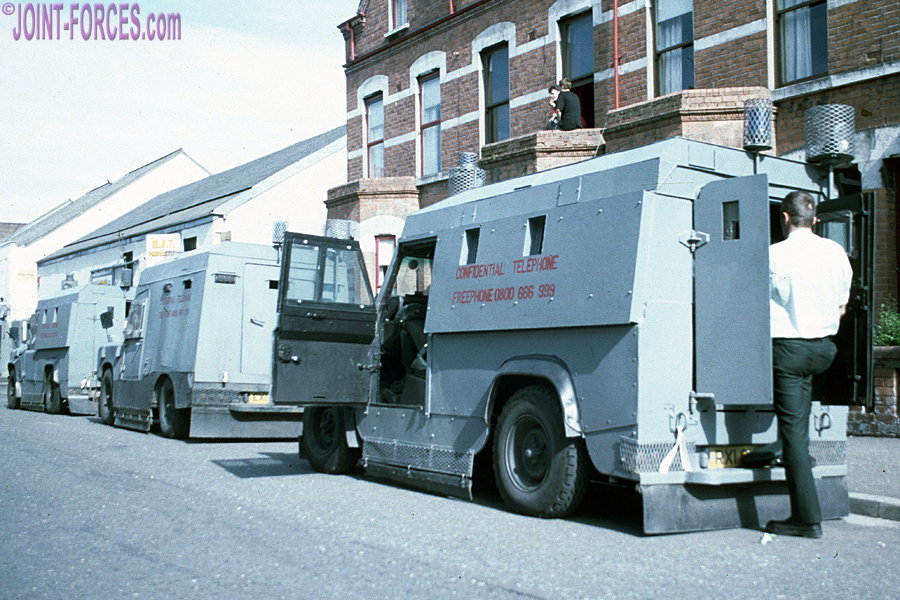

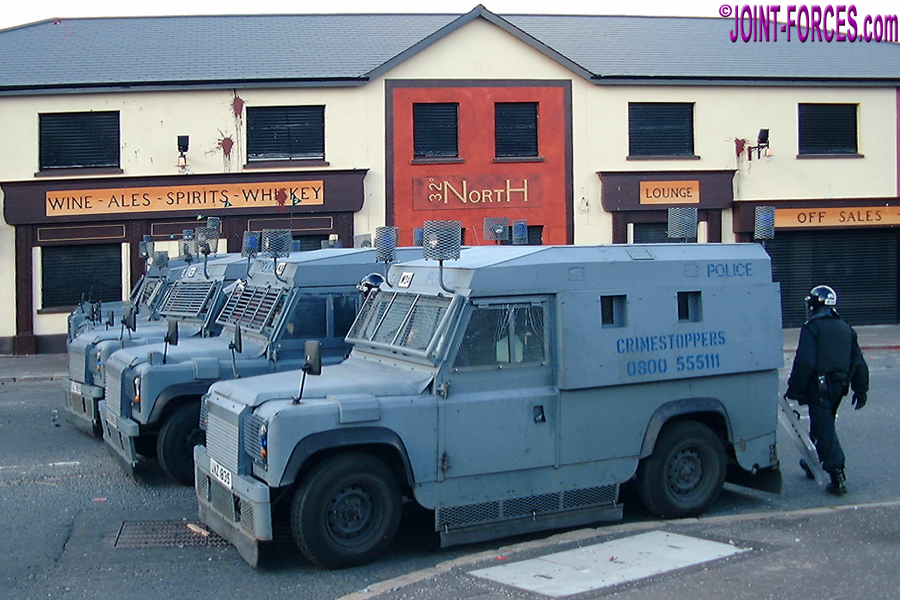
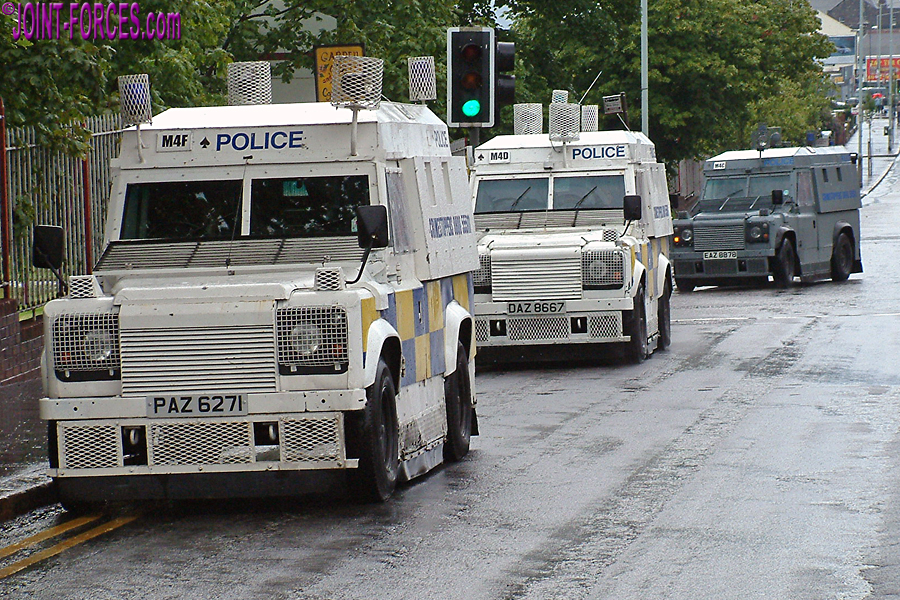
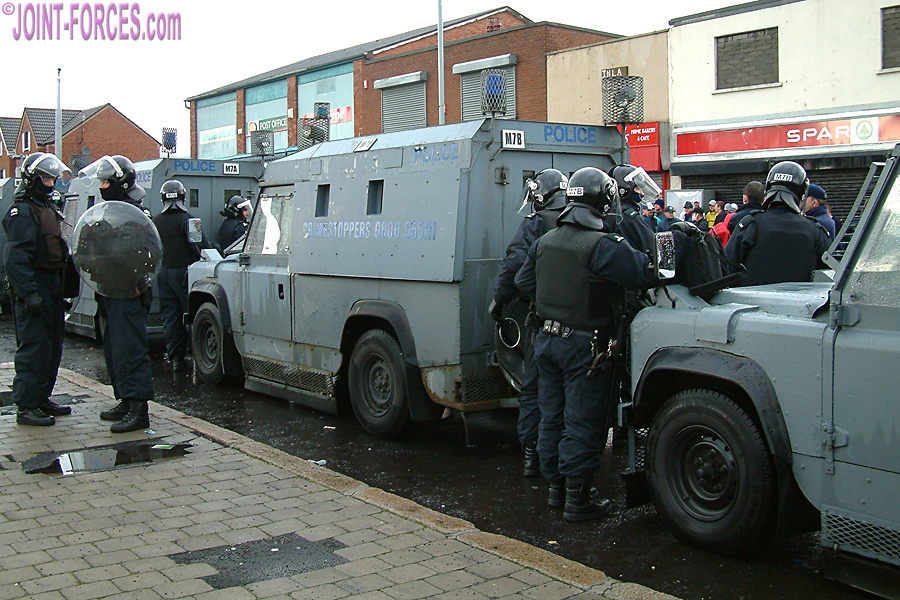

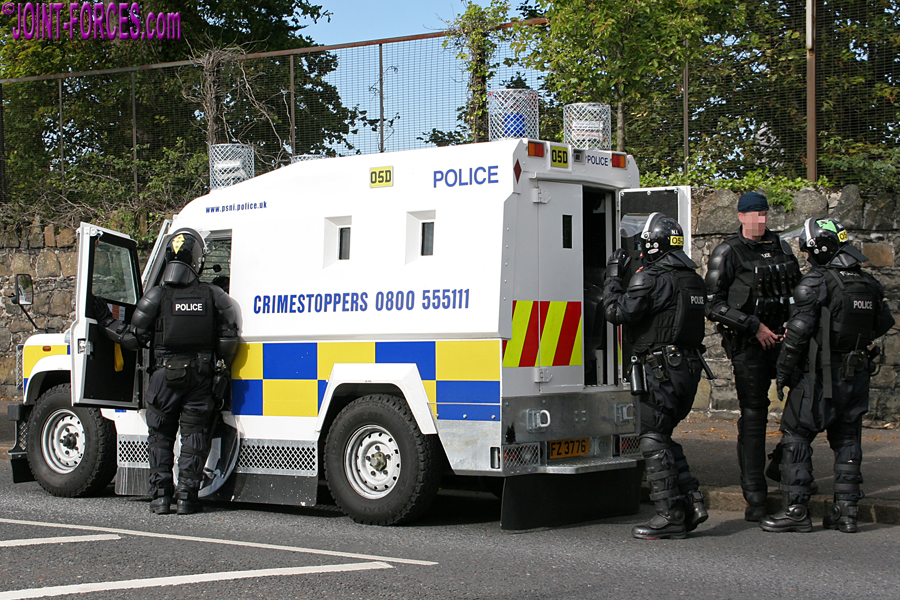
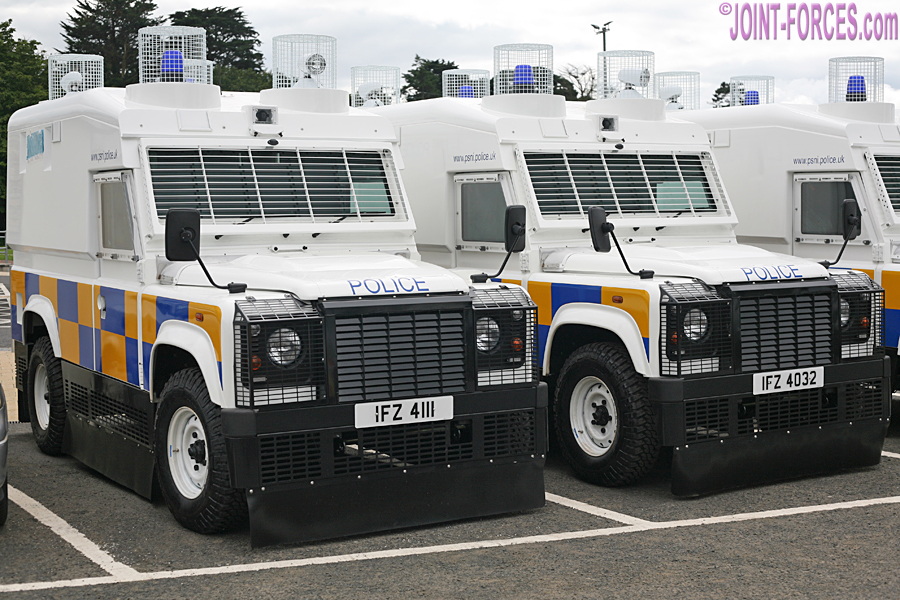
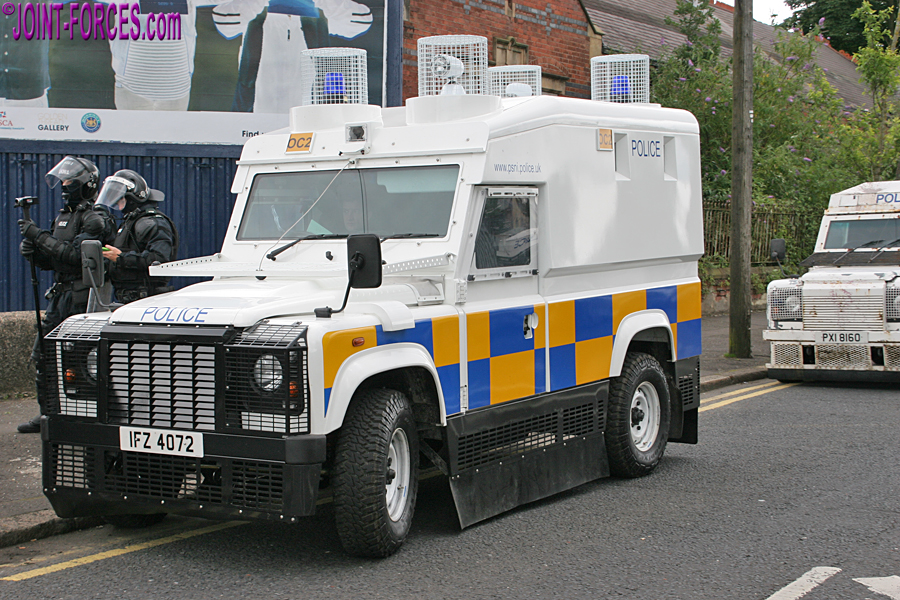
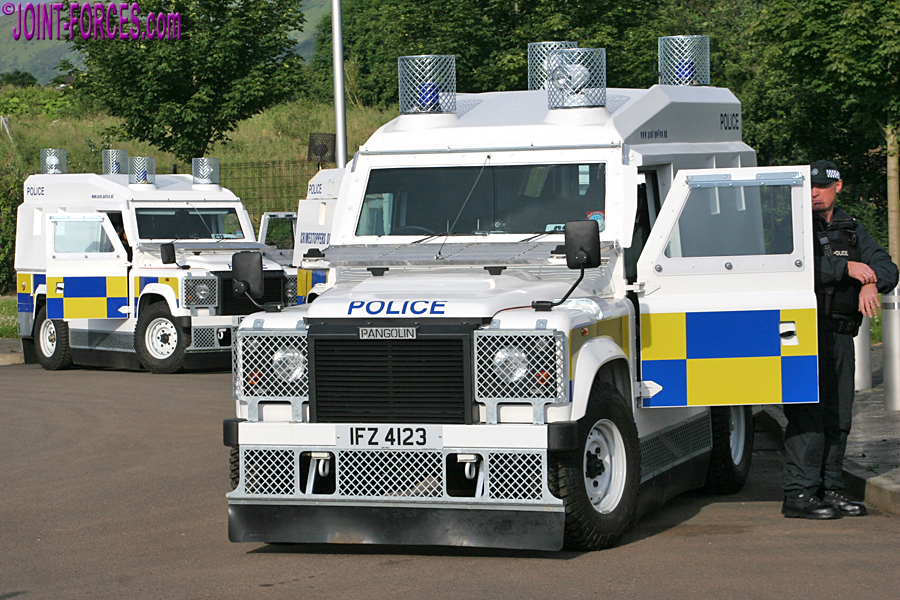
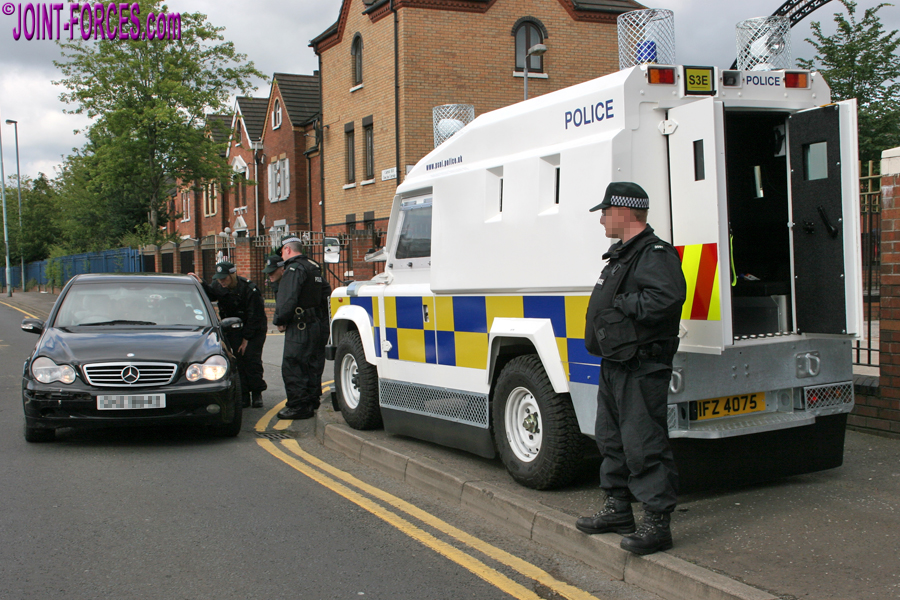


















Pingback : 12 July 21 ~ Ulster Land Rover Library Update | Joint Forces News